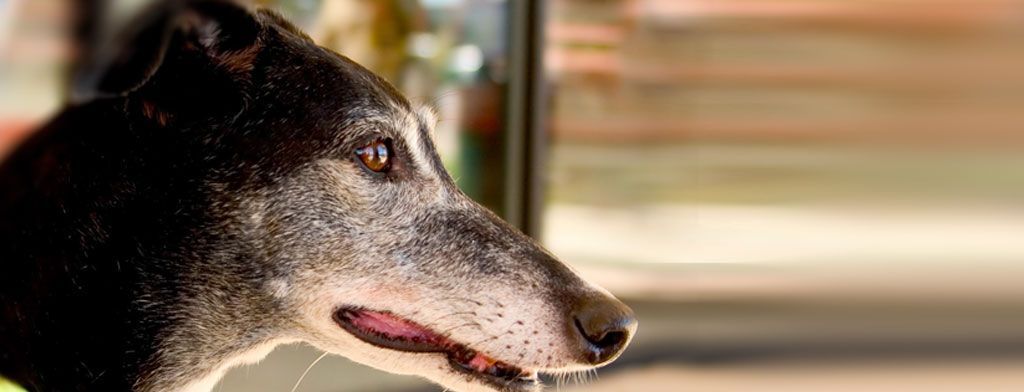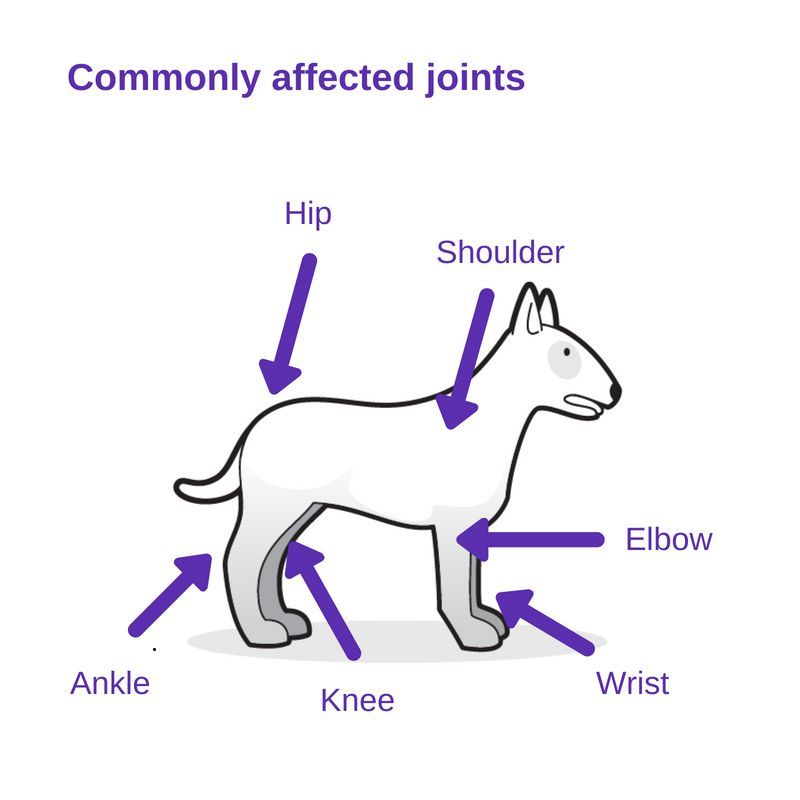It is estimated that 1 in 5 dogs suffer from arthritis.
What is Osteoarthitis?
Arthritis or osteoarthritis is the irreversible and progressive deterioration of joints that causes pain and a reduction in joint motion. It affects dogs of all ages but predominantly pets greater than 10 years of age.
Arthritis affects dogs of all sizes but large breed dogs are more commonly affected by arthritis than smaller ones.
Breeds Commonly Affected:
- Newfoundland
- Saint Bernard
- Rottweiler
- Labrador Retriever
Risk Factors:
- Genetic predisposition
- Intense activity as seen in athletic or working dogs
- Trauma
- Joint surgery
- Excess body weight
- Senior pets
- Genetic predisposition
Signs Your Dog Has Osteoarthritis
Common Signs of Osteoarthritis in a Dog
- Stiffness
- Difficulty jumping or climbing stairs
- Difficulty rising from lying down
- Vocalization
- Lack of interest in exercise and games
- Poor coat from decreased grooming
- Long nails from less movement
Osteoarthritis Staging
Osteoarthritis Management
Arthritis management is based on decreasing pain and clinical signs, slowing disease progression, and improving the quality of life.
Keys to successful arthritis management involves:
- Pain management
- Controlled exercise
- Weight control
- Nutritional supplements
- Joint stabilization
Pain Management
Veterinary medicines such as pain control, nutraceuticals, or joint protective drugs such as injectable polysulfated glycosaminoglycans (PSGAG) may be prescribed.
Pain control is important in managing the later stages of arthritis. Nonsteroidal anti-inflammatories (NSAIDs) are prescribed based on the health and weight of the pet. They offer both anti-inflammatory effects and pain control. Pets that are prescribed this medication must be closely monitored for side effects such as vomiting or diarrhea, increased drinking, or bleeding.
Other medications include disease-modifying agents such as PSGAG, glucosamine, Tramadol, or even alternative therapies such as Stem Cell Therapy.
Controlled Exercise
A controlled exercise that decreases joint strain and builds muscles to support joints such as swimming or walking on flat surfaces can help improve mobility.
There are two forms of exercise that are important in the management of arthritis:
- A low-impact, therapeutic exercise that keeps the joints in motion such as massage, swimming, stretching
- Aerobic exercise to improve strength, fitness and maintain a healthy weight such as leash walking, swimming
Tips to help prevent further joint and muscular injury:
- Warm-up before exercise - start with leash walking followed by leash jogging before running off the leash
- Avoid sudden variation in exercise intensity
- Consider muscle stretches and joint rotations for 1-2 seconds before exercise
Weight Control
It has been estimated that 40% of dogs with arthritis are also overweight. This causes further stress on the weight-bearing joints. A strict weight optimization plan can help reduce pain and improve mobility.
Nutritional Supplements
Diet control such as foods rich in Omega-3 fatty acids (fish oil or flaxseed oil) or veterinary prescription diets that have the correct balance of Omega-3 fatty acids can be useful.
Joint Stabilisation
Surgical options such as joint replacements, excision arthroplasty, or arthrodesis may be required if pain cannot be controlled by conservative means.
Home Care
Tips to help manage a pet with arthritis:
Weight control
- Keeping your pet at a healthy weight loss may help relieve the pressure on the joints
Home Care
- Provide a warm environment as cold weather can worsen symptoms
- Place beds away from cold draughts
- Provide ramps instead of stairs to avoid jumping or falls
- Avoid slippery areas such as tiles or place non-slip surfaces down to aid in mobility
- Provide assistance in and out of the car
Exercise
- Be consistent with exercise that is tailored to your pet - exercising just on the weekend may leave your pet feeling stiff and painful
- Avoid rough terrain and uneven surfaces as this can be very hard on the joints
- Avoid rough play
Grooming
- Regularly groom with a soft brush as your pet may not be as flexible as before to reach those hard-to-reach areas
- Trim nails more often as less active pets have less opportunity to wear down their nails
Parasite Control
- Regular parasite control is important to prevent irritating parasite infections
Supplements
- There are many supplements on the market that claim to help arthritis symptoms. Not all of them have been scientifically proven to be useful. Always consult your veterinarian about your pet's needs.
If your pet appears to be in pain and does not eat or drink, seek veterinary attention. Your vet will be able to assign an arthritis management program to help improve the pet's quality of life.






